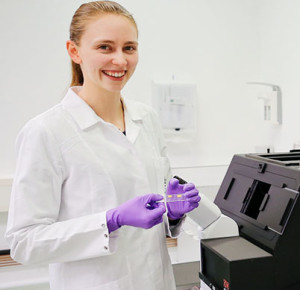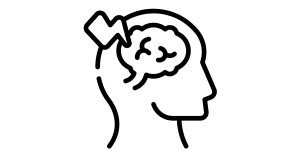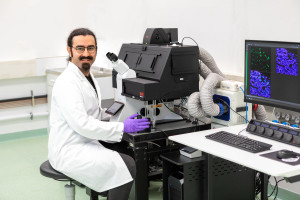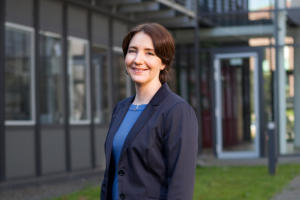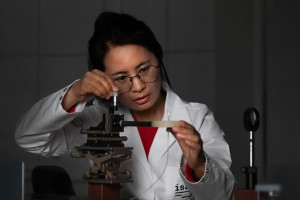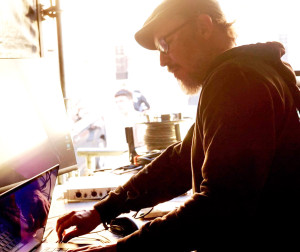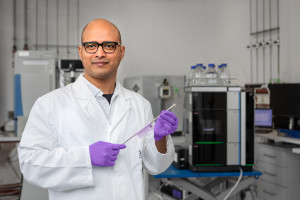Dortmund, 21st November 2024
The responsible use of resources is a key issue for health research. Particularly in the field of artificial intelligence (AI), which is already playing a key role in the analysis of medical data, the question of sustainability arises.
The more complex the microscope data, for example, and the more powerful the AI models become, the more resources they tie up - including not only memory, energy and computing power, but also specialist knowledge, for example. Dr Jianxu Chen, head of the junior research group AMBIOM - Analysis of Microscopic BIOMedical Images, wants to tackle this challenge with his research. For example, he and his group are working on new tools and algorithms to compress existing AI models while maintaining comparable prediction accuracy. In the first English episode of »NACHGEFORSCHT - DIE LIVESCHALTE INS LABOR«, Chen talks about his research and how his path from mathematics led him into biomedical research.
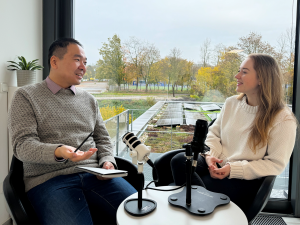
Dr Jianxu Chen (left) tells host Cheyenne Peters about his research.
© ISAS
